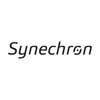Filter interviews by
ClickSoftware Java Developer Interview Questions and Answers
10 Interview questions
Data types are classifications of data items based on their characteristics.
Data types define the type of data that a variable can hold
Java has two categories of data types: primitive and non-primitive
Primitive data types include int, double, boolean, char, etc.
Non-primitive data types include arrays, classes, interfaces, etc.
A programming language in Java
Define a grammar for the language
Implement a lexer to tokenize the input
Use a parser to build an abstract syntax tree
Implement a type checker to ensure type safety
Generate bytecode or machine code from the AST
Provide a runtime environment to execute the code
A collection is a group of objects that can be stored, manipulated, and retrieved as a single unit.
Collections are used to store and manipulate groups of related objects
Examples include ArrayList, LinkedList, HashSet, TreeMap
Collections can be sorted, searched, and filtered
Object oriented programming is a programming paradigm that uses objects to represent and manipulate data.
OOP focuses on encapsulation, inheritance, and polymorphism
Objects have attributes (data) and methods (functions)
Java, C++, and Python are popular OOP languages
Example: A car object has attributes like color and model, and methods like start and stop
Operators are symbols that perform operations on operands in a programming language.
Arithmetic operators: +, -, *, /, %
Relational operators: <, >, <=, >=, ==, !=
Logical operators: &&, ||, !
Bitwise operators: &, |, ^, ~, <<, >>, >>>
Assignment operators: =, +=, -=, *=, /=, %=
Conditional operator: ? :
Condition statements are used to execute code based on certain conditions being met.
Condition statements are typically written using if, else if, and else keywords
The condition inside the if statement must evaluate to true for the code inside the block to be executed
Multiple conditions can be checked using logical operators such as && (and) and || (or)
Switch statements are another way to execute code based on cond...
Classes are blueprints for objects, while objects are instances of classes.
Classes define the properties and behaviors of objects
Objects are created from classes and have their own unique values for properties
Classes can be thought of as a template or a blueprint
Objects are created using the 'new' keyword followed by the class name
Classes can have static properties and methods, while objects cannot
Servlets are Java classes that handle HTTP requests and responses. XML is a markup language used for data exchange.
Servlets are server-side components that generate dynamic web content.
XML is used to store and transport data between systems.
Servlets can be used to handle form submissions, authentication, and session management.
XML can be used to define data structures, configuration files, and web services.
Servlet...
Arrays, strings, and classes are fundamental concepts in Java programming.
Arrays are collections of similar data types that can be accessed using an index.
Strings are sequences of characters that are immutable in Java.
Classes are templates for creating objects that encapsulate data and behavior.
Arrays and strings are both objects in Java.
Classes can be used to create custom data types and define their behavior.
Control statements in JavaScript are used to control the flow of execution of a program.
if-else statements
switch statements
for loops
while loops
do-while loops
break and continue statements
ClickSoftware Java Developer Interview Experiences
1 interview found
I appeared for an interview in Feb 2022.
Java programming language
(10 Questions)
- Q1. What is object oriented programming
- Q2. What is data types and types of data type
- Q3. Define collection and examples
- Q4. Explain condition statements
- Q5. Explain servlets and xmls
- Ans.
Servlets are Java classes that handle HTTP requests and responses. XML is a markup language used for data exchange.
Servlets are server-side components that generate dynamic web content.
XML is used to store and transport data between systems.
Servlets can be used to handle form submissions, authentication, and session management.
XML can be used to define data structures, configuration files, and web services.
Servlets are...
- Q6. Write a programming language in java
- Q7. What is arrays, strings and classes
- Ans.
Arrays, strings, and classes are fundamental concepts in Java programming.
Arrays are collections of similar data types that can be accessed using an index.
Strings are sequences of characters that are immutable in Java.
Classes are templates for creating objects that encapsulate data and behavior.
Arrays and strings are both objects in Java.
Classes can be used to create custom data types and define their behavior.
- Q8. Difference between classes and objects
- Q9. Control statements in js
- Ans.
Control statements in JavaScript are used to control the flow of execution of a program.
if-else statements
switch statements
for loops
while loops
do-while loops
break and continue statements
- Q10. Explain operators types
Interview Preparation Tips
- Java
- HTML
- OOPS
- Core Java
Skills evaluated in this interview
Top trending discussions






Interview questions from similar companies

I applied via Naukri.com and was interviewed before Sep 2019. There were 6 interview rounds.
Interview Questionnaire
3 Questions
- Q1. IQ Test
- Q2. Machine Test
- Q3. Face To Face
Interview Preparation Tips
1. IQ Test
2. Machine Test
3. Face to Face
IQ Test is not so tough but prepare well Machine Test
Machine Test Question are like :-
Q.1 - We declare a variable in C++ like "is_this_a_variable" and in Java like "IsThisAVariable". There is underscore in between every word and first alphabet of every word is in lowercase in C++ and in Java first alphabet is in capital without underscore. Create a program in which if user input a string in a C++ variable format it will convert the input in java variable format.
Q2. Count the frequency of a string.
user input string - pqhphi
output-
p - 2
q - 1
h - 2
i - 1
Be strong in algorithms and data structure.

I applied via Referral and was interviewed before Jan 2020. There were 5 interview rounds.
Interview Questionnaire
1 Question
- Q1. I was asked about my past experience and few questions on People's Management
Interview Preparation Tips

Software Developer Interview Questions & Answers
Virtusa Consulting Servicesposted on 15 Sep 2021
I appeared for an interview before Sep 2020.
(2 Questions)
Round duration - 90 minutes
Round difficulty - Easy
It happens in very friendly manner.
- Q1.
Paths in a Matrix Problem Statement
Given an 'M x N' matrix, print all the possible paths from the top-left corner to the bottom-right corner. You can only move either right (from (i,j) to (i,j+1)) or dow...
- Ans.
Print all possible paths from top-left to bottom-right in a matrix by moving only right or down.
Use backtracking to explore all possible paths from top-left to bottom-right in the matrix.
At each cell, recursively explore moving right and down until reaching the bottom-right corner.
Keep track of the current path and add it to the result when reaching the destination.
- Q2. Can you create 2 tables in SQL and perform different operations on them?
- Ans.
Yes, I can create 2 tables in SQL and perform operations like INSERT, SELECT, UPDATE, and DELETE.
Create Table 1: CREATE TABLE employees (id INT, name VARCHAR(50), salary DECIMAL(10,2));
Create Table 2: CREATE TABLE departments (dept_id INT, dept_name VARCHAR(50));
Insert Data: INSERT INTO employees VALUES (1, 'John Doe', 50000);
Select Data: SELECT * FROM employees WHERE salary > 40000;
Update Data: UPDATE employees SET...
Round duration - 90 minutes
Round difficulty - Medium
No problem occur very friendly environment.
(1 Question)
Round duration - 90 minutes
Round difficulty - Hard
- Q1.
Rat in a Maze Problem Statement
You need to determine all possible paths for a rat starting at position (0, 0) in a square maze to reach its destination at (N-1, N-1). The maze is represented as an N*N ma...
- Ans.
Find all possible paths for a rat in a maze from source to destination.
Use backtracking to explore all possible paths in the maze.
Keep track of visited cells to avoid revisiting them.
Explore all possible directions (up, down, left, right) from each cell.
Add the current direction to the path and recursively explore further.
If the destination is reached, add the path to the list of valid paths.
Interview Preparation Tips
Tip 1 : Competitive programming plays a major role when you are appearing for coding rounds as a fresher. In the coding rounds, you won't get direct problems copied from Geeksforgeeks or Leetcode. You would be required to use your logical thinking to go ahead in the process. This is where competitive programming helps.
Tip 2 : Coding rounds are all about Coding + Timing. Most people fail to excel due to the pressure of a timer ticking on your head. So, instead of just solving problems, try to participate in timed contests. This will help you be used to the pressure of the timer.
Tip 3 : Many big companies like Microsoft, Amazon, and even Google expect you to be good at standard problems. So, once you are done with coding round by your logical skills and competitive programming, you must be well versed with some standard problems in order to excel.
Application resume tips for other job seekersTip 1 : Make it short, crisp, and simple. It is always good to have a 1 pager resume.
Tip 2 : Resume must comprise of the following: Educational Qualifications, Technical skills, Projects, Work experience (if any), Achievements. Other than this, you may include some extra co-curricular achievements.
Skills evaluated in this interview

I applied via Naukri.com and was interviewed before Apr 2020. There was 1 interview round.
Interview Questionnaire
1 Question
- Q1. Technical questions
Interview Preparation Tips

I applied via Naukri.com and was interviewed before Nov 2018. There were 3 interview rounds.
Interview Questionnaire
1 Question
- Q1. Mainly fully technical skills -2technical +1 HR round
Interview Preparation Tips

Software Developer Interview Questions & Answers
Virtusa Consulting Servicesposted on 13 Jan 2015
Interview Preparation Tips
Experience: Quite easy..It contains mcq and one programming question. MCQ covers databases,sql,software testing,c++
Tips: You can easily pass the test,no need to worry
Round: Interview
Experience: Questions are among databases and java,they will ask u fav subj and asks questions in that
Tips: Through with ur fav subject..be confident, simple anad basic questions,try to solve secreening test question using java language
Round: Interview
Experience: Its better to say technical only,the hr also asks about test pattren.programming question.then normal HR questions
Tips: It better to do some research about the company,overall it's easy and cake walk for those who are strong in java and databases
General Tips: CSE guys can easily clear that test and interview..without any hesitattion
Skills: Java,databases, SQL, C, General Aptitude
College Name: NIT Warangal
Motivation: Virtusa is emerging company
Funny Moments: In interview they asked about my girl friend,her name andwhen ur are going to marry. answer them in a funny way with smile in your face

Interview Preparation Tips
Experience: In the first round there was an online test. Questions were from aptitude, general English and a simple code( very simple if you have programming skills).
Tips: It was purely a knowledge based round so everything depends on your preparation level and a bit confidence.
Round: Technical Interview
Experience: In technical round interview the process was like this...
I entered in room and greeted interviewer and he asked me to sit down. I handed over my resume to him. His first question was tell me about yourself. Then my projects. After that he came on programming, He asked me very basic concept about C++. Questions were like what is polymorphism, What is encapsulation. He also asked program of fibonacci series. After all these question he again looked at my resume and asked me 'why your CGPA is low?' I said that when i was in my first year i had interest in electronics but later when i encountered with programming i decided to have my career in this field so i could not concentrate on my core subjects.
Tips: C++ is '''''must''''' for Virtusa if you are from electronics . I didn't know data structure but c++ was on my fingers. Answer question with confidence.
Round: HR Interview
Experience: HR interview was really cool. Interview asked me about myself, my family, real life applications of my project. After that he came on real stuff. He asked question like why do you want to join virtusa? I said virtusa is this .. virtusa is this.....and many more..and in last i said this is i want to join virtusa. Next question was ' what do think about dowry?'. At first i was surprised to hear this question but i realized that interview only want to check my ability to speak on random topic. I answered the question by criticizing dowry and he was pleased to hear my answer. After one or two general HR question like location preference , he told me that your interview is over please wait outside for result. It was really nice to meet you . Thank you.
Tips: Never stop speaking in HR interview. They only check your ability to speak on random topics and their general HR question. I was continuously speaking ...please do not bother about grammar while speaking ...just speak with confidence(relevant).
General Tips: prepare c , c++ and ability to speak in front of interviewer.
Skills: Basic Coding, Aptitude, 1)communication
College Name: NIT Jalandhar

Interview Questionnaire
13 Questions
- Q1. Indroduce yourself ?
- Ans.
I am a software developer with experience in various programming languages and frameworks.
Proficient in Java, C++, and Python
Familiar with web development using HTML, CSS, and JavaScript
Experience with database management systems such as MySQL and MongoDB
Strong problem-solving and analytical skills
Worked on projects involving machine learning and artificial intelligence
- Q2. Difference between method overloading and methode overriding ?
- Ans.
Method overloading is having multiple methods with the same name but different parameters. Method overriding is having a subclass method with the same name and parameters as a superclass method.
Method overloading is used to provide different ways of calling the same method with different parameters.
Method overriding is used to provide a specific implementation of a method in a subclass that is already defined in the su...
- Q3. Difference between switch case and if else statement?
- Ans.
Switch case is used for multiple conditions while if else is used for binary conditions.
Switch case is faster than if else for multiple conditions.
If else can handle complex conditions while switch case cannot.
Switch case can only compare values of the same data type.
If else can handle null values while switch case cannot.
Example: switch (day) { case 1: console.log('Monday'); break; case 2: console.log('Tuesday'); brea...
- Q4. What is interface and abstract class?
- Ans.
Interface and abstract class are both used for abstraction in object-oriented programming.
An interface is a collection of abstract methods that define a contract for a class to implement.
An abstract class is a class that cannot be instantiated and may contain abstract methods.
Interfaces are used to achieve multiple inheritance in Java.
Abstract classes can have non-abstract methods and instance variables.
An example of a...
- Q5. Whats is polymorphisom?
- Ans.
Polymorphism is the ability of an object to take on many forms.
It allows objects of different classes to be treated as if they were objects of the same class.
It is achieved through method overriding and method overloading.
Example: A shape class can have multiple subclasses like circle, square, etc. and all can be treated as shapes.
Example: A method can have different implementations in different classes but with the sa...
- Q6. What is inherritance ?
- Ans.
Inheritance is a mechanism in object-oriented programming where a new class is created by inheriting properties of an existing class.
Inheritance allows code reusability and saves time and effort in writing new code.
The existing class is called the parent or base class, and the new class is called the child or derived class.
The child class inherits all the properties and methods of the parent class and can also add its ...
- Q7. Default case in switch case
- Ans.
Default case in switch case statement
Default case is executed when no other case matches the switch expression
It is optional and can be placed anywhere in the switch statement
It is often used to handle unexpected input or errors
It should always be the last case in the switch statement
- Q8. Introduce yourself apart from resume?
- Ans.
I am a passionate software developer with a strong background in web development and a love for problem-solving.
Experienced in HTML, CSS, JavaScript, and various web development frameworks
Proficient in backend development using languages like Java, Python, and Node.js
Familiar with database management systems such as MySQL and MongoDB
Strong problem-solving skills and ability to work well in a team environment
- Q9. What is your weaknesses ?
- Ans.
I tend to get overly focused on details, which can sometimes slow down my progress.
I have a tendency to spend too much time on perfecting small details
I sometimes struggle with prioritizing tasks due to my focus on details
I am working on improving my time management skills to balance detail-oriented work with efficiency
- Q10. Do you have any offer from any other company ?
- Ans.
Yes, I have received offers from two other companies.
Received offers from Company A and Company B
Currently evaluating all offers to make an informed decision
Considering factors like company culture, growth opportunities, and compensation
- Q11. Which company would you like to join apart from sapient ?
- Ans.
I would like to join Google because of their innovative projects and work culture.
Google is known for its cutting-edge technology and innovative projects.
They have a strong focus on employee well-being and work-life balance.
Google offers opportunities for career growth and development.
The company has a diverse and inclusive work culture.
Google is a leader in the tech industry with a global presence.
- Q12. Have you ever worked in a team?
- Ans.
Yes, I have worked in multiple teams in various projects.
Worked in a team of developers to create a new software application
Collaborated with designers, testers, and project managers to meet project deadlines
Participated in daily stand-up meetings to discuss progress and roadblocks
- Q13. 8 metals bolls are similar ?
- Ans.
Yes, they are similar.
All 8 metal balls are of the same material.
They have the same size and weight.
They have the same physical properties.
They are interchangeable in any given situation.
Interview Preparation Tips
Skills evaluated in this interview

I appeared for an interview before Dec 2015.
Interview Questionnaire
2 Questions
- Q1. Basic questions on Java and data structures with few analytics questions
- Q2. Basic questions
Interview Preparation Tips
Experience: 1 minute for each question. Completely technical round with questions on Java, algorithm and data structures
Duration: 1 hour 30 minutes
Total Questions: 90
Round: HR Interview
Experience: They ask about your interest, your hobbies and once you are done with this they will ask you questions on the hobbies you previously claimed you like.
Skills: Java Programming
College Name: Thapar University, Patiala
ClickSoftware Interview FAQs
Tell us how to improve this page.
Interview Questions for Popular Designations
Java Developer Interview Questions from Similar Companies
|
Senior Software Engineer
6
salaries
| ₹9.5 L/yr - ₹12.8 L/yr |
|
Application Support Engineer
5
salaries
| ₹5.7 L/yr - ₹7.9 L/yr |
|
Technical Support Engineer
4
salaries
| ₹6.3 L/yr - ₹9.5 L/yr |
|
Senior Technical Consultant
4
salaries
| ₹12.5 L/yr - ₹22.8 L/yr |
|
Senior QA Engineer
4
salaries
| ₹12 L/yr - ₹24 L/yr |

Cognizant

EXL Service

Sutherland Global Services

Optum Global Solutions
- Home >
- Interviews >
- ClickSoftware Interview Questions















